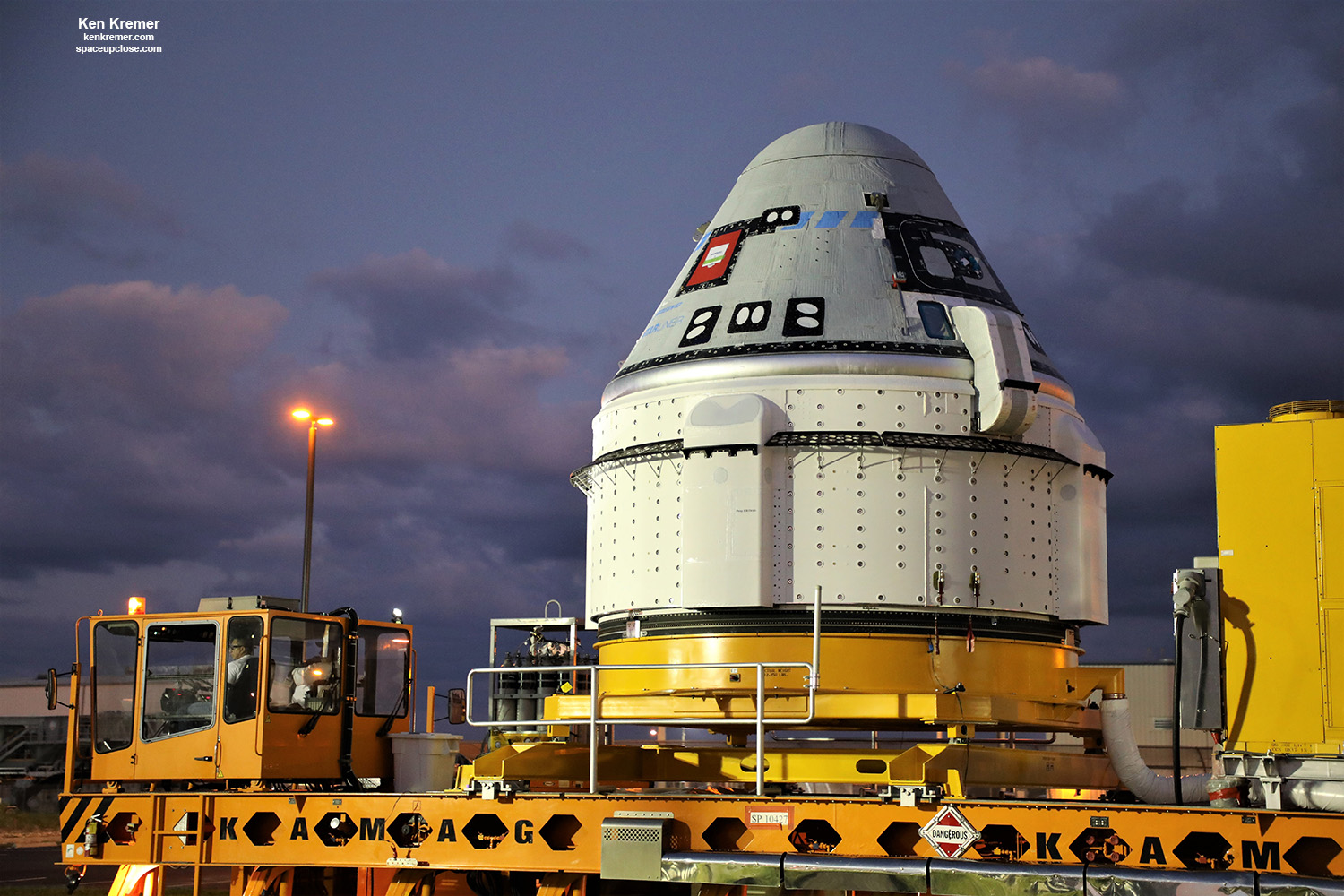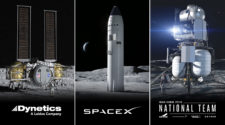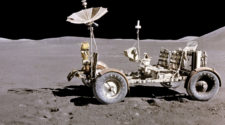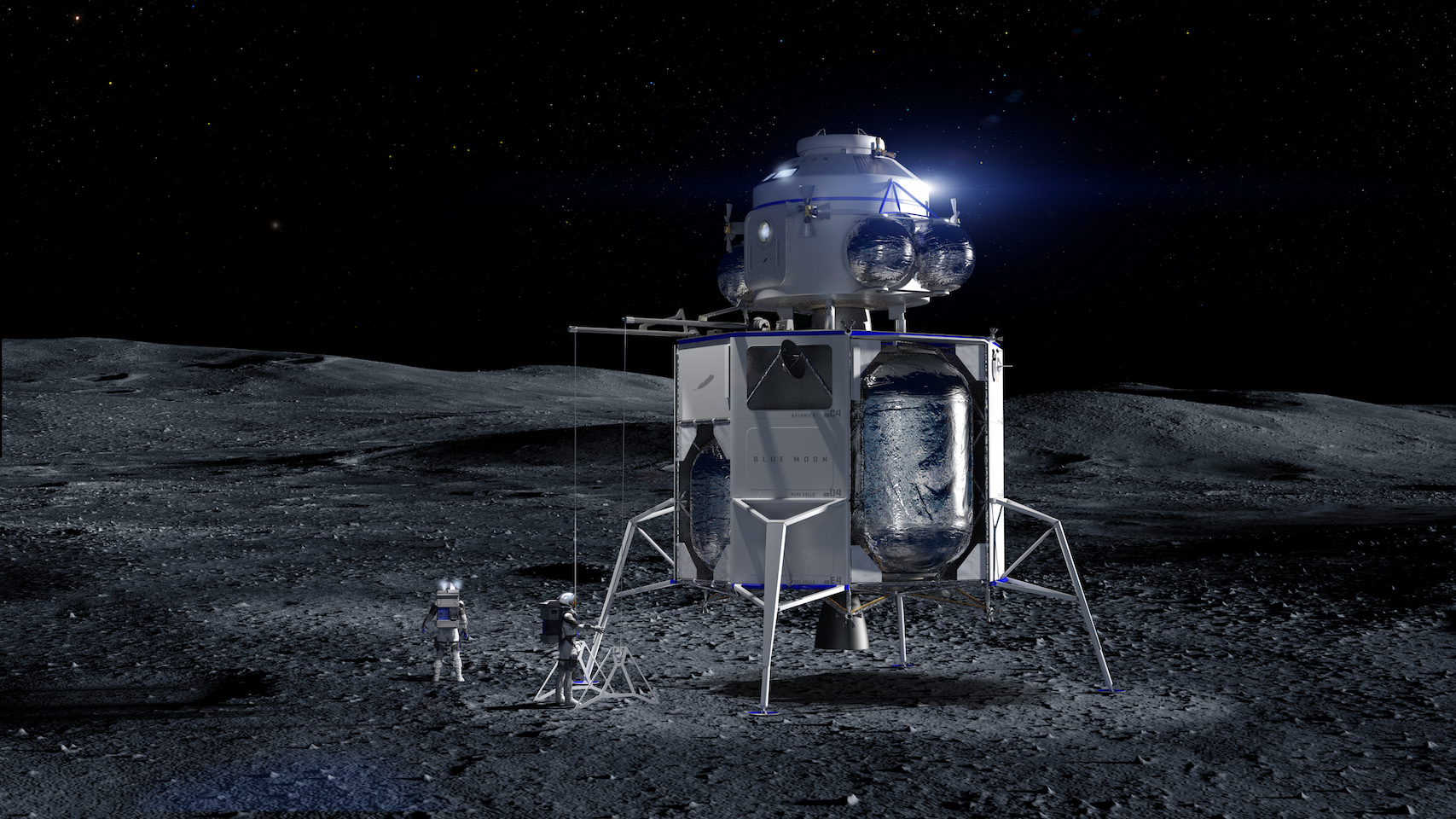
The appearance of a photo of an old wooden sailing ship set the stage for a dramatic announcement by a secretive space company earlier this year. On April 26th of this year the usually quiet twitter account of Jeff Bezos’ privately funded space company, Blue Origin, tweeted a cryptic yet telling image: a black and white photograph of Ernest Shackleton’s ship “Endurance”.
5.9.19 pic.twitter.com/BzvwCsDM2T
— Blue Origin (@blueorigin) April 26, 2019
Shackleton led an expedition to cross Antarctica from sea to sea, via the South Pole, however, the expedition quickly ended in disaster when the Endurance became trapped in ice and was crushed. The crew managed to escape by camping on the sea ice and then survived a 720 nautical mile journey via lifeboats to South Georiga Island from where they were rescued.
A crater on the south pole of the Moon was named after Shackleton in 1994. However, it is not just any crater. It’s one that NASA knows is filled with ice water making it an ideal choice for a lunar base. The photo that Blue Origin tweeted was accompanied simply by a date “5.9.19.” That turned out to be the date Jeff Bezos laid out his vision for the future of humanity and Blue Origin’s role in it.
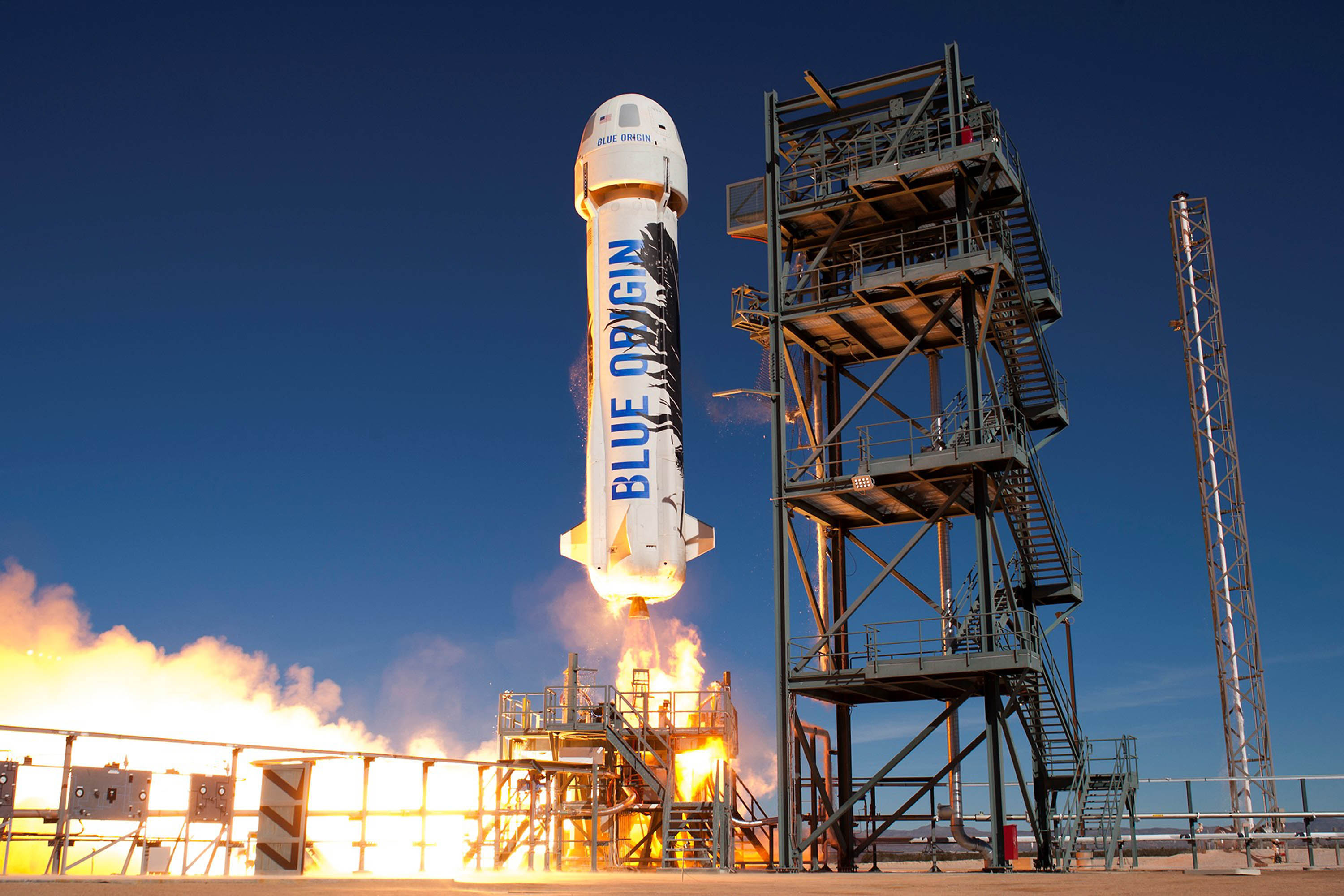
Blue Origin was mostly founded in secret on September 8, 2000. It is privately funded by Amazon founder and CEO Jeff Bezos in a suburb outside of Seattle where Amazon also is headquartered. This makes the company a few years older than another well-known rocket company with reusable vehicles, SpaceX, but they’ve been working on a set of very different vehicles out of the public eye.
Blue Origin’s motto, “Gradatim Ferociter,” is Latin for “Step by Step Ferociously” and demonstrates the company’s approach towards establishing a space fairing civilization.
Up until recently, Blue Origin was a very small company, with less than 300 employees in 2013, building small hopper vehicles and perfecting each level of technology before moving onto the next one.
Now their workload and funding have exploded, with Jeff Bezos selling a billion dollars a year of Amazon stock to fund this endeavor. What drives him to do this? Why was it founded? The reason is in the title: Earth is our Blue Origin and we must go to Space to protect it. That was the message and vision that was laid out in May, citing everything from the limited resources, increasing energy requirements, and the toxicity of heavy industry.
Bezos laid out his vision for long term expansion into the solar system. It doesn’t involve colonizing and terraforming other planets, rather building artificial civilizations in space. Called O’Neill cylinders, they would be massive spacecraft kilometers long. They’re shaped like a hollow cylinder, capped at both ends, spinning to produce artificial gravity.
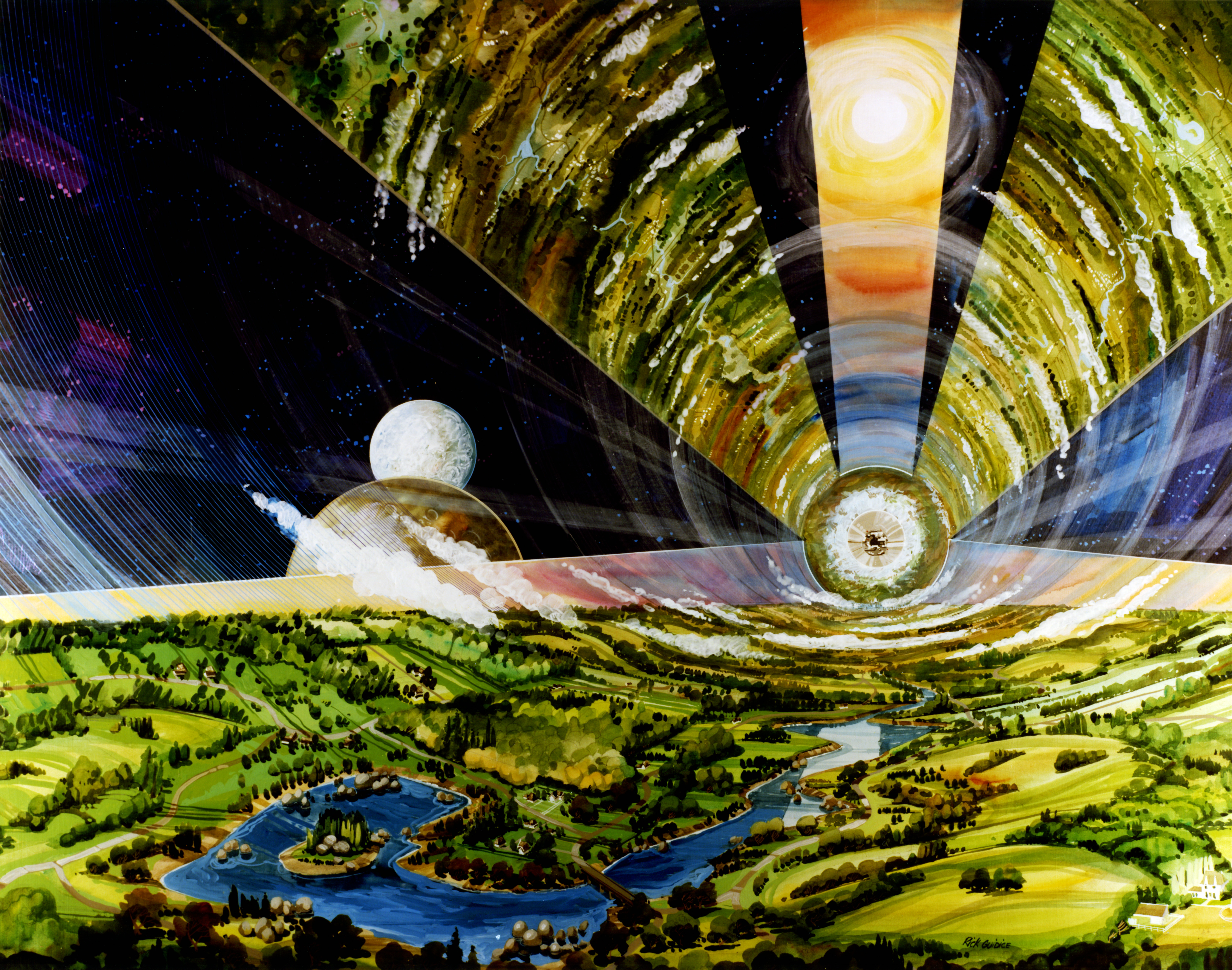
American physicist Gerald K. O’Neill first proposed the cylindrical space colony in an article that appeared in Physics Today in 1974. The idea was conceptualized cooperatively by O’Neill and the students as part of an assignment in his undergraduate physics courses at Princeton University. You can learn more about O’Neill cylinders at this Wikipedia link and by watching this YouTube video.
Such a grand vision of colonies in space is something that Bezos recognizes that Blue Origin, and SpaceX for that matter, can’t do alone. It wasn’t the railroad companies that built the cities out on the western frontier of the United States, it was the entrepreneurs who invested in building a new life far from the established American cities along the Eastern seaboard.
Amazon was built on the shoulders of giants. There was the U.S. Postal service for delivery. The internet for communication. Manufacturers for books and other products. And the credit card system to make payments. Without all of those, if Amazon had tried to build everything from scratch, the company likely would not be here today.
Blue Origin’s initial goal is to be the railroad locomotives of space travel by making it less expensive for entrepreneurs and space enthusiasts to invest in creating a civilization of humans who live and work in space.
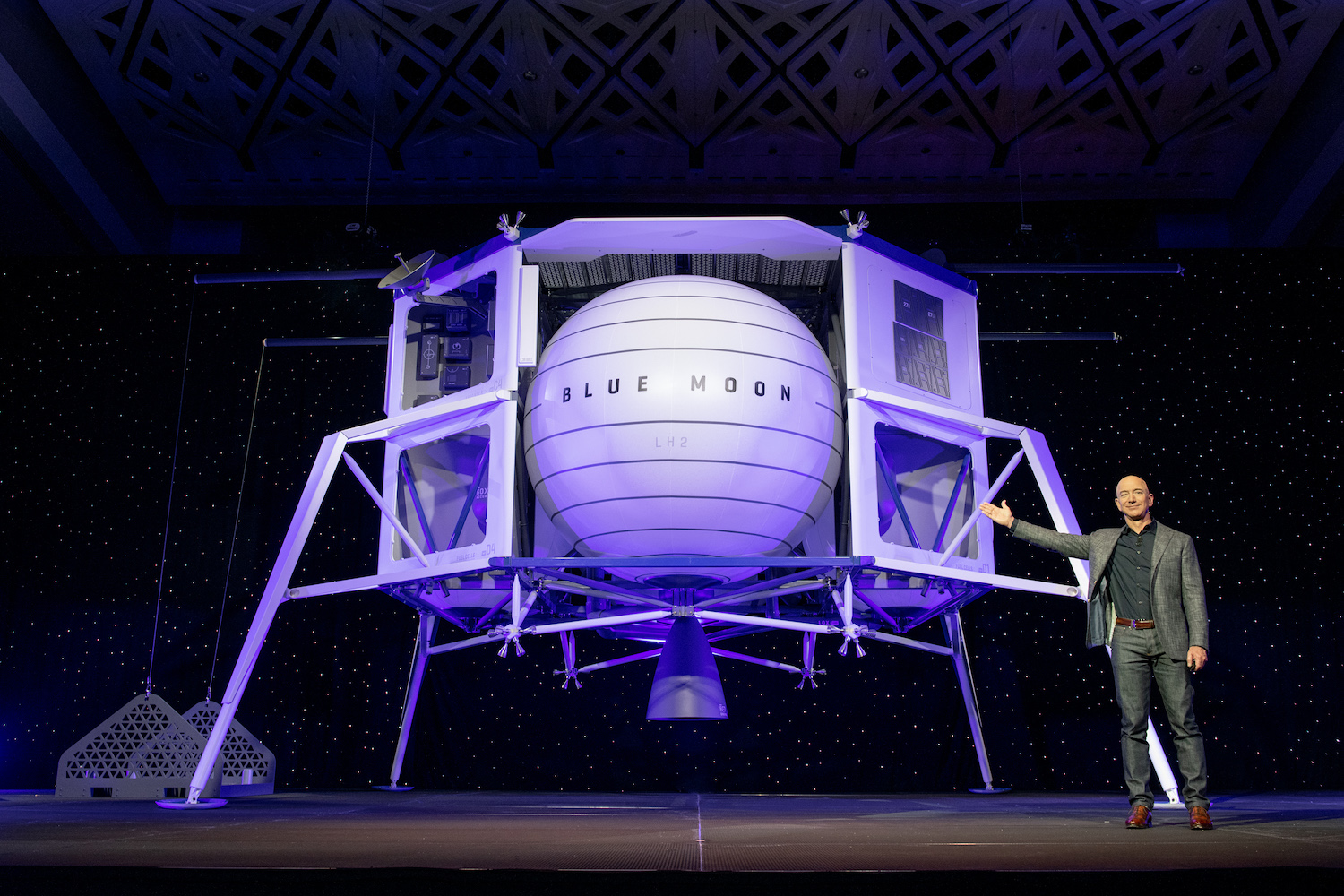
Blue Origin believes that the first big leap is returning to the Moon. At the May 9 event, Bezos revealed the Blue Moon lander as one step toward that goal. The four-legged, hydrogen-oxygen powered lander will be able to deliver 3.5 metric tons to the lunar surface. There will be a larger, stretched-tank variant of the vehicle that will deliver 6.5 metric tons and will include a crewed vehicle.
When it was revealed, Blue Origin’s lander was seen as a design that could easily be the front runner for NASA’s Artemis program. By helping put Americans back on the Moon, Blue Origin’s lander would also the first step towards establishing a permanent base on the moon, which Bezos’ describes as the ideal place for building and launching vehicles further out into the solar system.
During the 70th International Astronautical Congress being held in Washington D.C. this week, Bezos took to the stage to announce a national team that will jointly develop a crewed lunar lander for NASA’s Artemis program that will be derived from the work already done on the Blue Moon lunar lander.
Blue Origin is teaming up with Lockheed Martin, Northrop Grumman, and Draper – three companies that have decades of experience supporting NASA’s crewed space programs and interplanetary missions.
Each of the companies will bring their industry-leading solutions to the project.
Blue Origin will function as the prime contractor. It will lead the overall program management, systems engineering, safety and mission assurance, and mission engineering. Blue Origin will also construct the descent element, based on the multi-year development of the Blue Moon lunar lander and the BE-7 engine.
“National challenges call for a national response. We are humbled and inspired to lead this deeply committed team that will land NASA astronauts on the Moon,” said Bob Smith, CEO, Blue Origin. “Combining our partners’ heritage with our advance work on the Blue Moon lunar lander and its BE-7 engine, our team is looking forward to working with NASA in support of the Artemis program.”
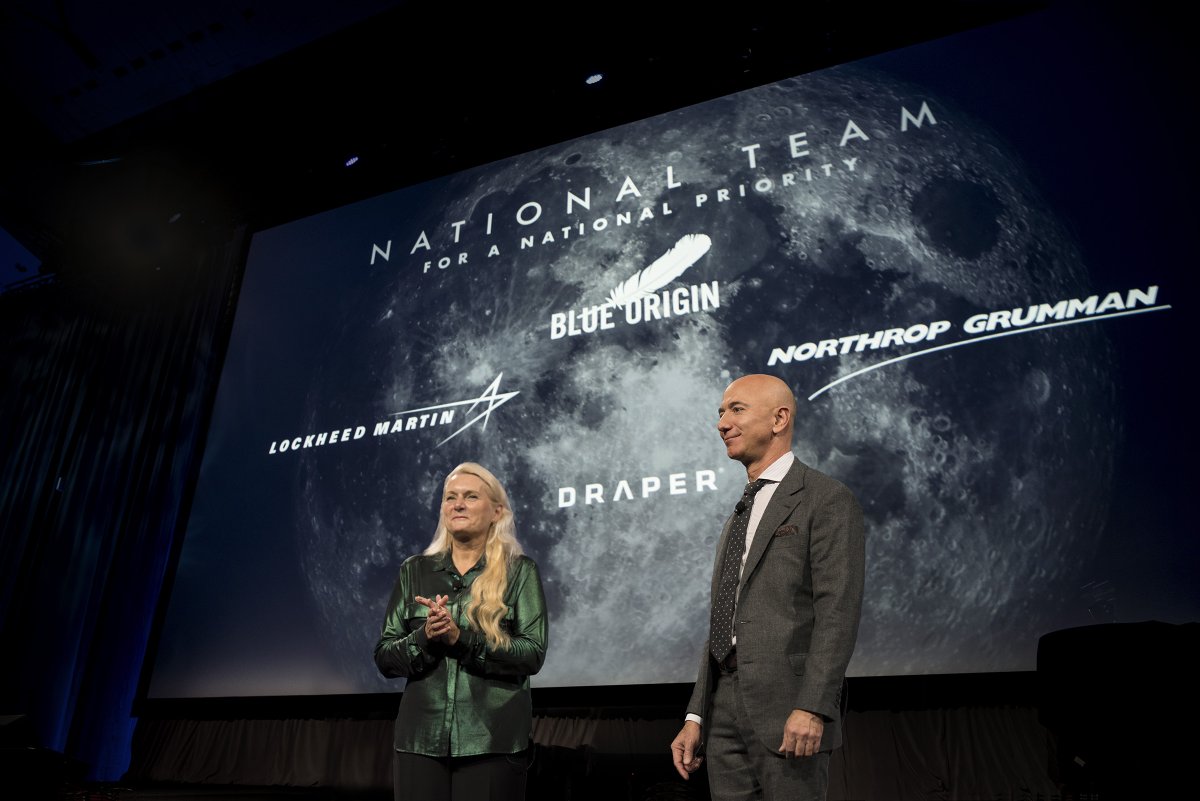
Lockheed Martin will develop the reusable ascent element vehicle that will return the astronauts to lunar orbit. The company will also take the lead for crewed flight operations and training of the astronauts.
“Lockheed Martin has been honored to help NASA explore space for more than 50 years, providing deep-space robotic missions, planetary landers, Space Shuttle heritage, and the Orion exploration spacecraft,” said Rick Ambrose, executive vice president, Lockheed Martin Space. “We value Blue Origin’s thoughtful approach to developing human-rated flight systems, and are thrilled to be part of a national team with this mix of innovation and experience.”
Northrop Grumman will provide the transfer element vehicle that will guide the lunar lander in close proximity to the Moon before it separates for final descent and touch down.
“Northrop Grumman’s commitment to put Americans back on the moon dates back over 50 years ago with the delivery of the first lunar lander for the historic Apollo Program,” said Blake Larson, corporate vice president and president of Innovation Systems, Northrop Grumman. “Along with our ongoing work on the Space Launch System boosters, astronaut escape system, and the Gateway habitat, we are proud to be a part of the Blue Origin national team to support NASA’s Artemis program and the ambitious goal to return to the moon by 2024.”
Draper will develop the guidance and navigation systems that will guide the lander down to the Moon’s surface.
“When the nation needs precision guidance, it calls on Draper,” said Kaigham J. Gabriel, President and CEO, Draper. “We guided Apollo to the moon and back nearly 50 years ago. We’re ready to do it again with the Blue Origin team for Artemis.”
While the Blue Moon lander is now likely moving into prime position to fly on NASA’s SLS rocket during the Artemis program, it is still expected to also head into space on Blue Origin’s first orbital rocket, the massive New Glenn.
Named after John Glenn, the first American to orbit the earth, the New Glenn will be the first major moneymaker for Blue Origin. It has the largest fairing ever, at 7 meters wide, and is capable of launching 45 metric tonnes to low earth orbit. The first stage will be reusable and it is expected to land far downrange onto a modified cargo freighter that will be moving even as the booster lands. When compared to the full reusable Falcon Heavy, New Glenn’s capability blows it out of the water.
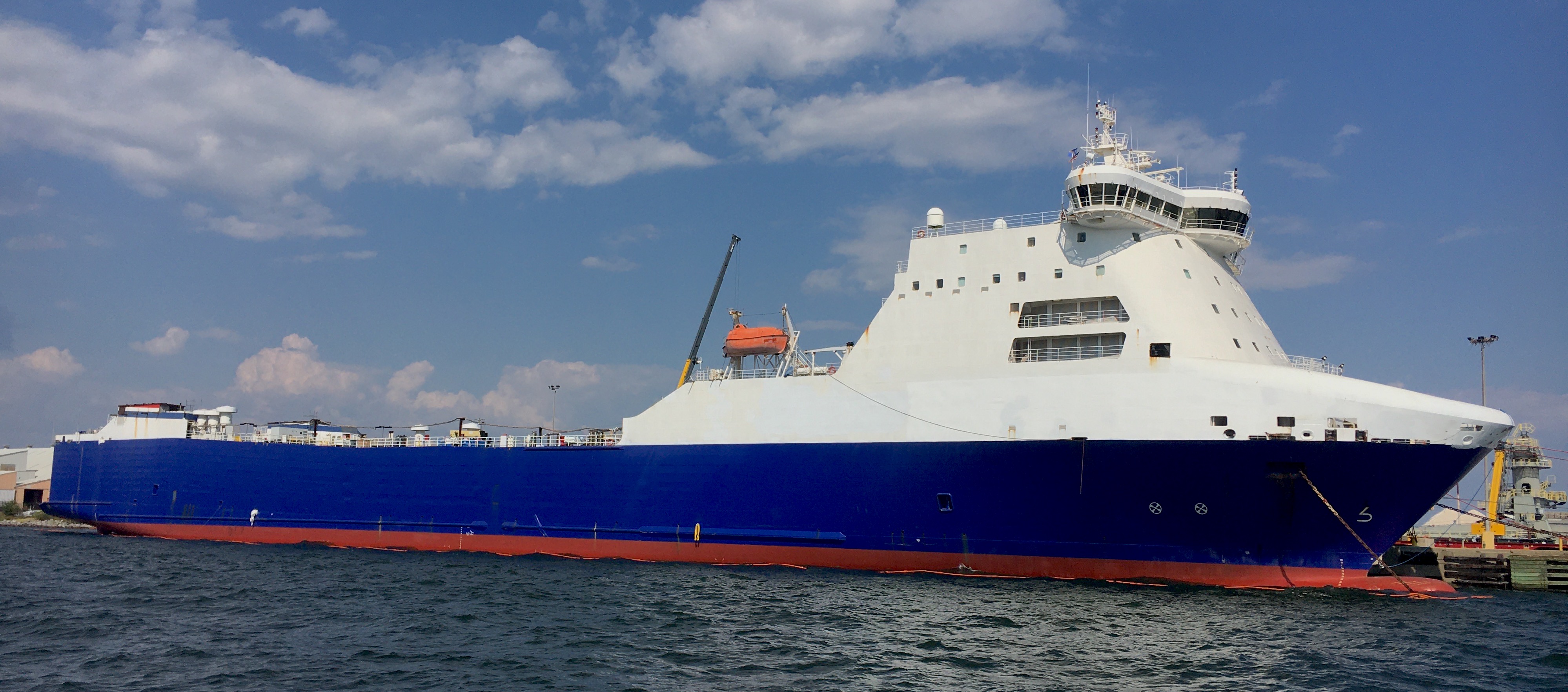
This is mostly due to its BE-4 engines, with the first stage being powered by liquid methane and oxygen and the second utilizing liquid hydrogen and oxygen. This second combination, often referred to as hydrolox, is the most efficient chemical combination known. Methane and oxygen are also very efficient, beating out the kerosene-oxygen combination that’s traditionally used in the aerospace industry (including SpaceX’s Falcon family, although their next generation uses methane). With the New Glenn utilizing hydrolox on the second stage it can easily increase the payload capacity with less fuel.
The BE-4 engine has even been contracted by United Launch Alliance (ULA) to be the main stage engine for the company’s Vulcan rocket that is under development.
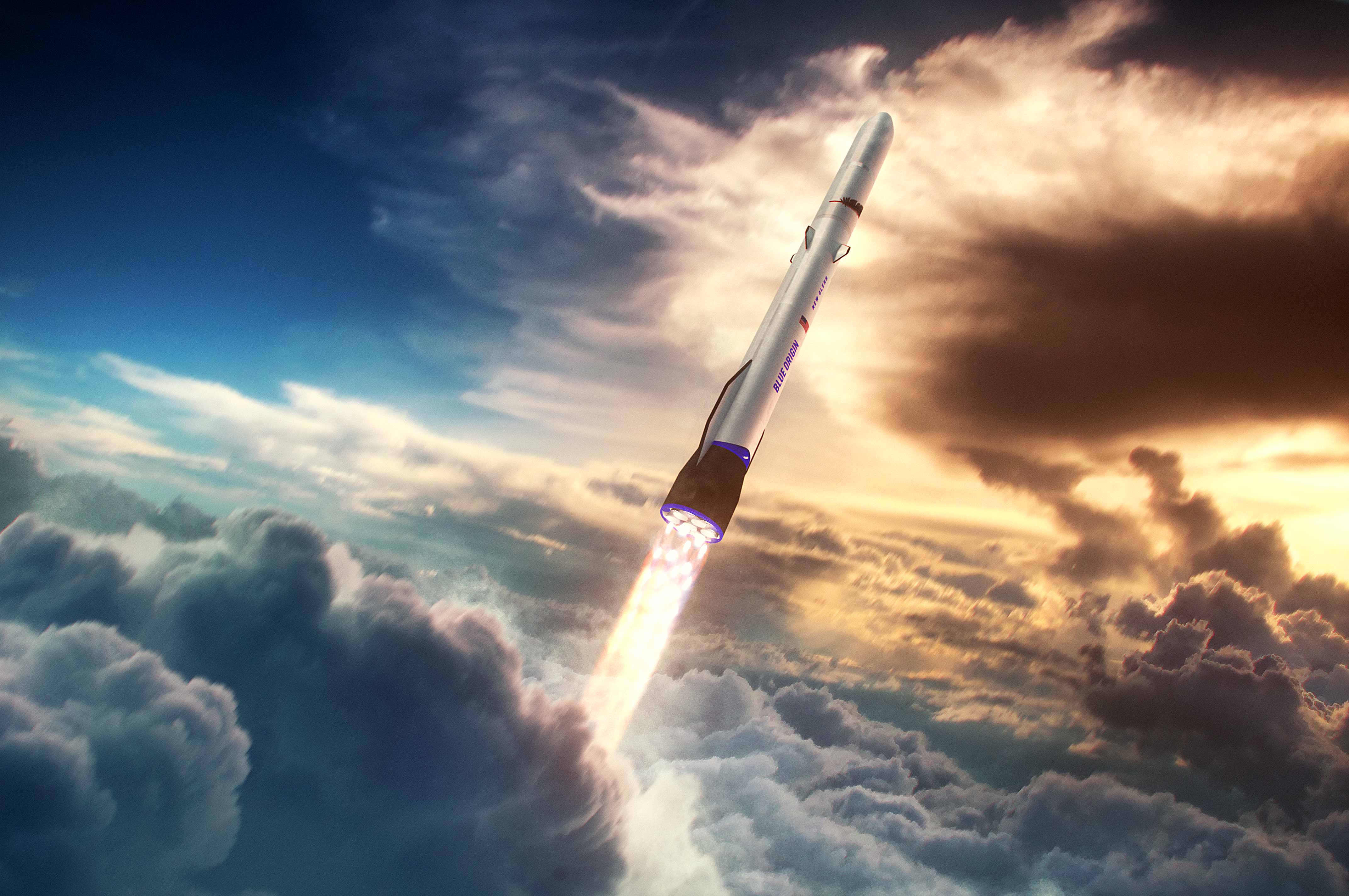
Currently, the only vehicle that Blue Origin operates is the New Shepard, named after the first American to cross the Karmen Line and enter space. It’s a suborbital vehicle that will launch tourists into space for a few minutes at a time.
Are you noticing a pattern in the naming yet?
New Shepard consists of a reusable crew capsule with the largest windows ever put in space sitting on top of a re-landable booster. This has been the product of years of hard work and while the design may be funny looking, it’s a marvel of engineering.
The crew capsule has redundant parachutes and a solid rocket escape motor making it simple and reliable. It sits on top of a ring, allowing for the motor to fire directly down (compared to pointing slight out) and push the crew to safety. A test of this showed that the booster itself could survive. That ring serves another purpose as well: it stabilizes the vehicle just like the back of a submarine. Air flows through and, along with its drag and control fins, controls its descent before lighting up the landing engine to touch down soft.
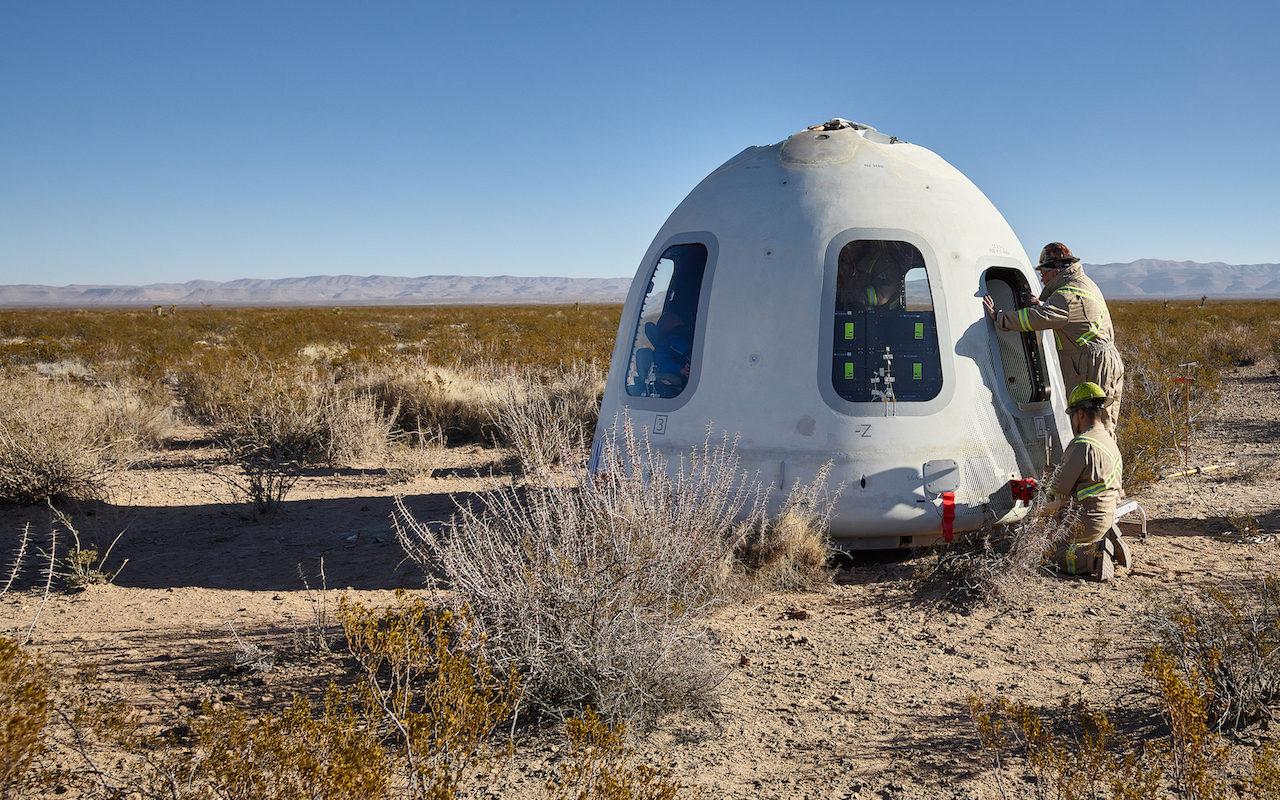
But why build the New Shepard? Why not go the route of SpaceX and aim for a small orbital vehicle first? The cost for a ride is high and the cross-section of enthusiastic space-loving millionaires that could afford it is certainly not enough to recoup the cost of development.
It all comes back to their motto: “Gradatim Ferociter.” Everything Blue Origin is doing depends on understanding and perfecting New Shepard.
Precision landing and reuse translates directly to both the New Glenn and Blue Moon, with aerodynamic control being key to booster reuse. The operation of hydrolox rocket engines, the most efficient chemical propellant out there, allows for the payload capability of Blue Moon and increases the performance of New Glenn’s upper stage.
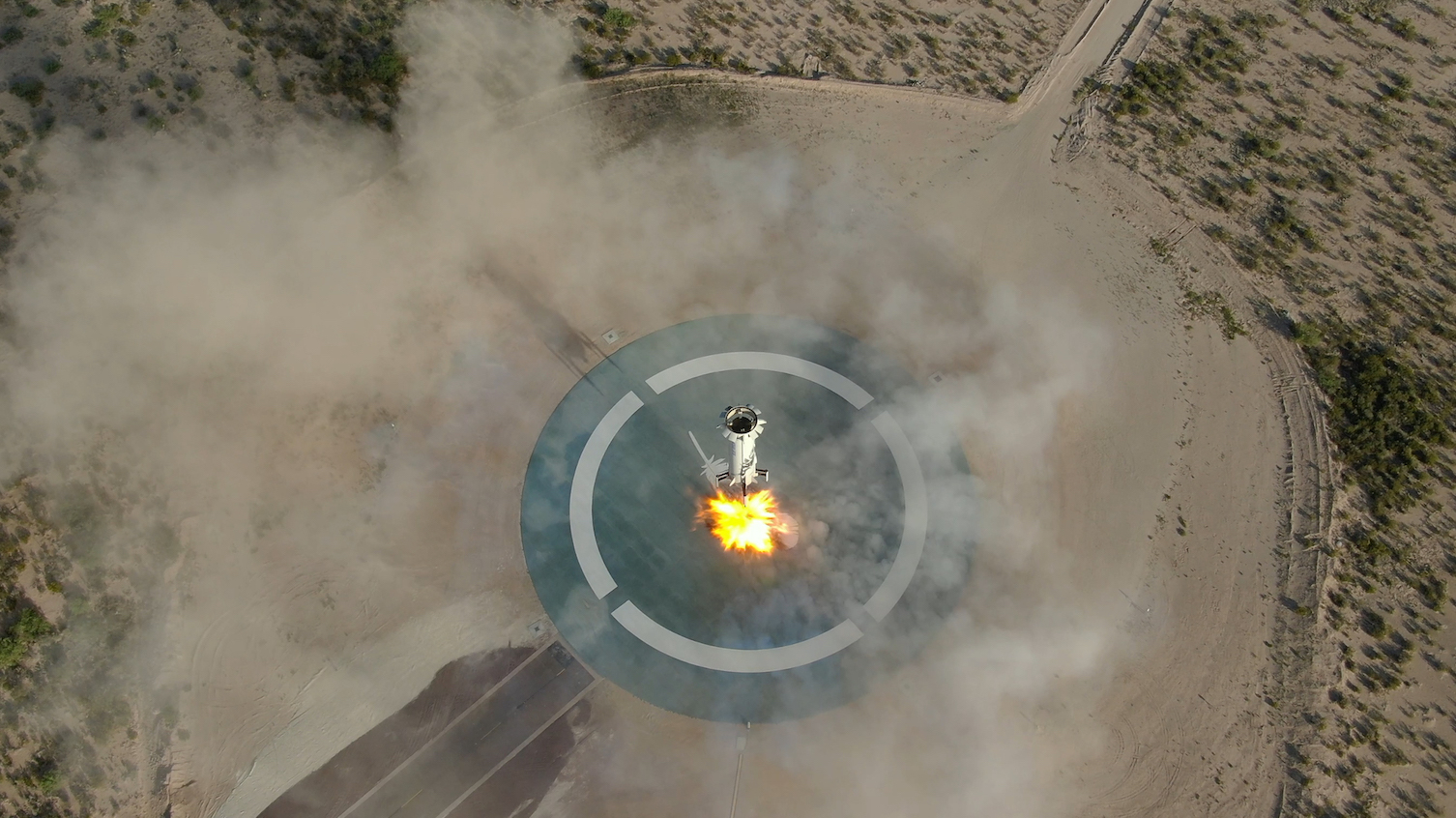
Putting people in space requires reliability and safety, including a reliable escape system and an understanding of basic life support. This is being perfected in the New Shepard Capsule and will be improved upon in their Blue Moon project.
Blue Origin promises big things, but will they deliver? They’ve been around longer than SpaceX and haven’t accomplished nearly as much. It’s completely possible that SpaceX’s more ambitious project, the super heavy-lift rocket, Starship will launch before New Glenn does.
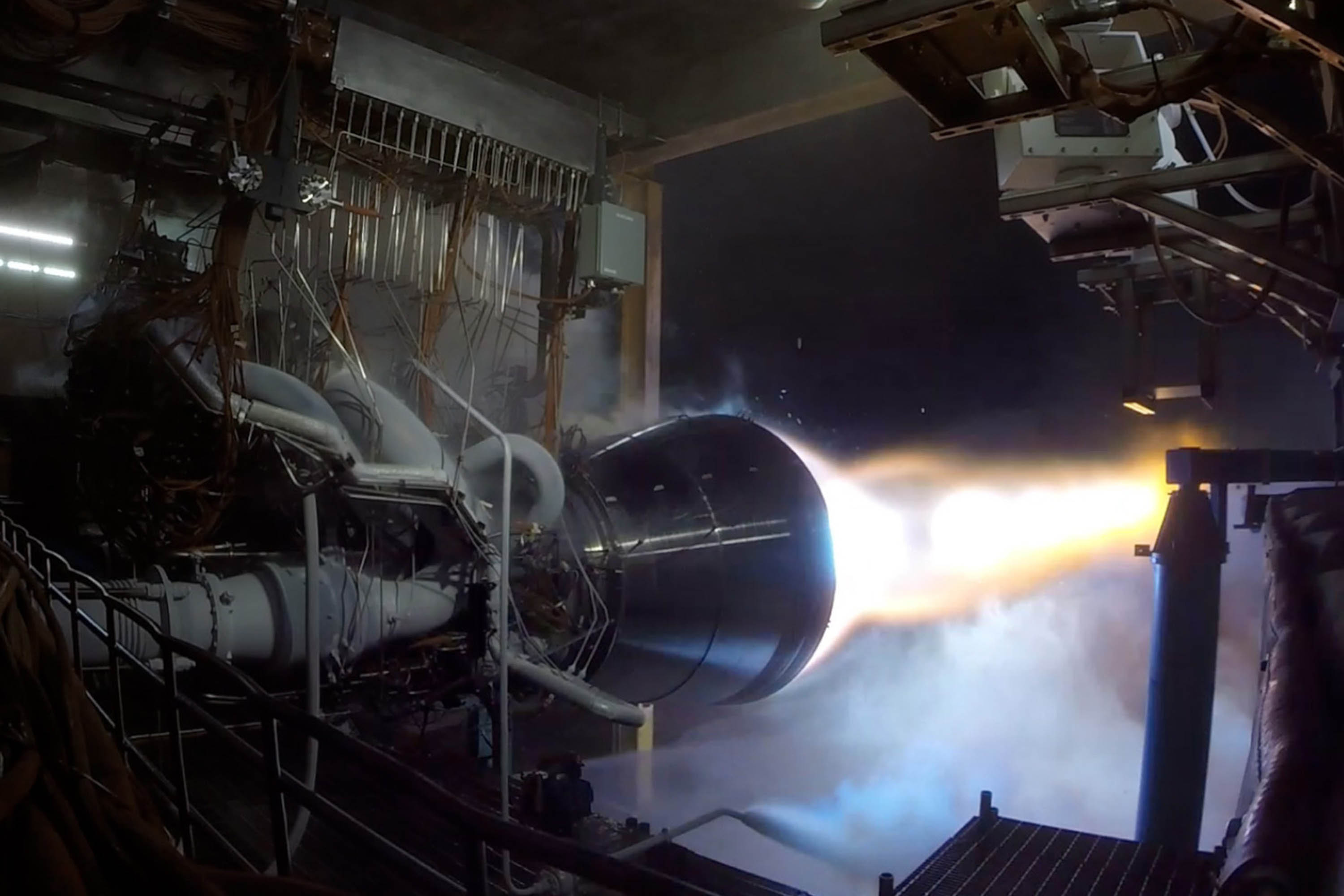
While competition is good for innovation, it’s important to remember where these two companies come from and how their approaches differ. SpaceX has always been at the whim of profit, designing for customers immediately then iterating over time to improve. Blue Origin, on the other hand, has the richest investor in history backing them.
We’ll see what Blue Origin will reveal next, there is a long-awaited New Armstrong vehicle that they hinted at when they revealed the New Glenn. Commercial space stations in low Earth orbit (which is where the International Space Station resides) could very easily be their next big project, with studies done with NASA showing the viability of turning an empty upper stage into living quarters. Whatever Blue Origin wants to accomplish they’ll set their eyes on and work towards it, step by step, ferociously.

